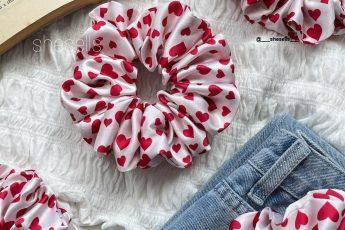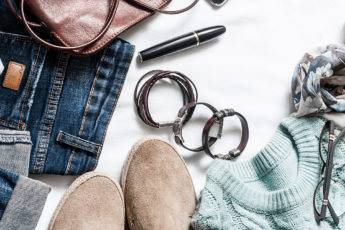How Compression Socks for Running Can Help With Your Exercises

Running is not just a sport or pastime activity. To some, it’s a way of life, something they identify with. However, as much as it benefits our health, it can also cause unwanted side effects on the human body.
Luckily, technology has advanced much nowadays, since we can jog for longer distances without much effort. Today, there are many tech gadgets, shoes, and even apparel and accessories created specifically for running and jogging enthusiasts. Such is the case with compression socks for running. If you haven’t heard about them before, you are probably wondering right now – what is their main purpose, if any? Let’s start at the top.
What are compression socks for running?
With a simple, yet effective design, compression socks are made of elastic material, usually covering the whole lower leg, up to below the knees. Their main purpose is to compress the veins at the surface of your skin, to provide better blood circulation. They also squeeze the muscles and arteries of your legs. How does this help runners improve their performance? With the so-called ‘compression therapy‘, many doctors have recognized the benefits of compression socks. Primarily, all the affected blood vessels improve circulation from and back to the heart. In return, the leg arteries have less work to do and the pressure (and risk of circulatory problems) is much lower. More importantly, the workflow of your veins will also decrease, allowing normal circulation across the entire body.
Source: Photo by Flo Karr on Unsplash
Benefits of using compression socks for running
Let’s break it down to get the whole picture. What are circulatory problems? More importantly, how do compression socks help prevent them from appearing? As you already found out, they work as a type of physical therapy for your leg’s blood vessels and help them circulate and pump enough blood, depending on your current activity.
As the compression socks increase blood circulation, your muscles won’t be fatigued as quickly as before, and you won’t feel that nasty pain in your shin anymore. FYI, shin splints appear mostly due to having bad shoes, flat feet, or lack of warmup. Make sure to stretch yourself enough before you start running, to avoid any muscle or bone injury. Please also note that compression socks should feel comfortable and not tight because this way, they’ll prevent normal blood circulation. Once you feel like you’re applying bandages to a wound, that’s when you’ll know they’re the right size. This way, your legs won’t feel as tired as before, as the socks will hold everything in place during any physical exercise.
What medical conditions do compression socks help with?
Anything related to the body’s blood circulation can be described as a circulatory problem. We need to pay attention to the symptoms, to prevent any of the following medical conditions from appearing.
- Leg ulcers
- DVT (Deep Vein Thrombosis)
- Diabetes
- Leg swellings
- Varicose veins
- Post-surgery
- Other circulatory problems
Who can use compression socks?
By now, most of you think that only sportspeople use compression socks for various exercises. However, they aren’t just used by athletes and people with medical conditions, but by other people, too. For example, many pregnant women often use compression socks to prevent getting swollen feet and varicose veins. People who work on their feet and have desk jobs can also wear them. Since part of the job requires them to stand all day, many medical conditions may appear. Also, you might have noticed how sometimes you stand up real quick, feeling light-headed or dizzy all of a sudden. This often happens due to low blood pressure, which can be improved by wearing these socks. Anyone with blood circulation problems can wear them too. Those with more complex medical conditions need to consult a medical specialist before they’ll be able to use them.
Source: Photo by Miguel A. Amutio on Unsplash
Does compression work?
You’ve probably seen many athletes wearing compression on their arms and legs. Allen Iverson is one of them, wearing his trademark compression sleeve on his right arm. Other famous players include Dwyane Wade, Vince Carter, and many professional athletes from different sports. They usually wear compression accessories because they keep the extremities warm, reduce soreness, and provide better blood circulation.
Many long-distance and ultra-marathon (footrace longer than 42km/26mi) contestants wear long socks during the race. During longer periods of physical activity, most of them need the assistance of gadgets and accessories, to improve their results. According to a recent study, they help athletes recover faster from a sprained ankle or any related injury.
How to find out how much compression your legs need
Available in many colors and designs, for various purposes, compression socks will cover the upper and lower limbs. What you should know is there are different pressure levels measured in mmHg (millimeter of mercury), so depending on the medical reason, always consult a doctor or a professional to measure your leg volume before they can prescribe the perfect fit. By default, people choose the ones with mild compression for work and pastime activities. As for heavier conditions such as deep vein thrombosis, doctors determine higher compression socks to prevent it from spreading.
Wrapping up
In short, this is how compression socks can help us during our daily running exercises. If you’re an active person, they can help reduce muscle fatigue and help you recover faster by improving the blood circulation in your body. Remember to avoid any folding and always check on your socks if they are equally covering your skin everywhere. Wearing folded compression socks for longer periods can cut your blood circulation and cause health issues. At any rate, consult a professional and let them recommend the right size, to avoid any complications.
Share via:





Leave a Comment